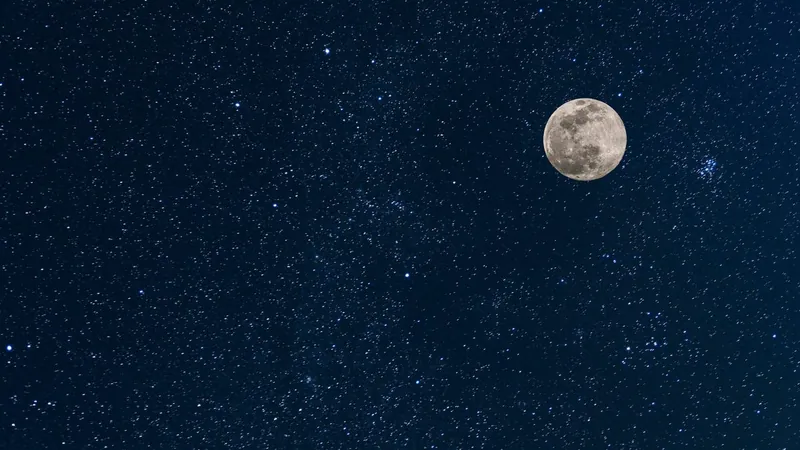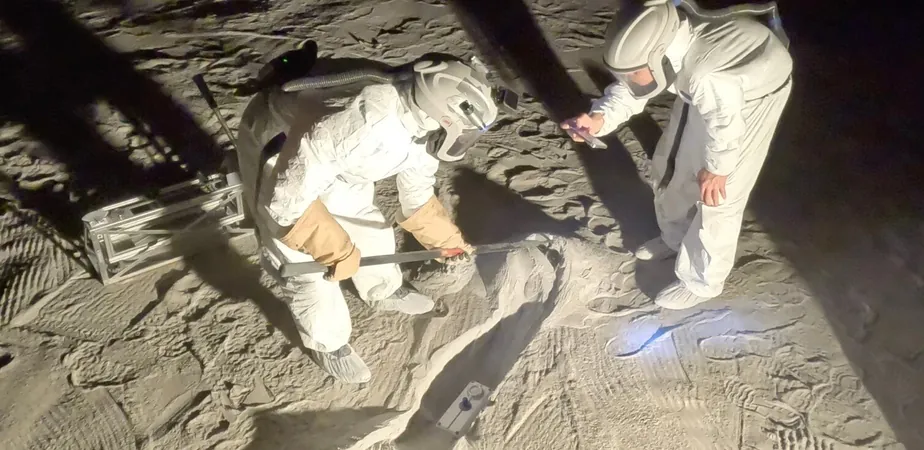
Meet Earth's Temporary Mini-Moon: Why You Won't Want to Miss It!
2024-09-23
Introduction
A fascinating cosmic visitor is set to grace Earth's skies this fall! A mini-moon, roughly the size of a city bus, will enter Earth's orbit, captivating skywatchers until Thanksgiving week. This asteroid, designated 2024 PT5, will be caught in our gravitational embrace from September 29 to November 25, 2023, before it departs back into the depths of the solar system.
The Identification of 2024 PT5
Identified by the Asteroid Terrestrial-impact Last Alert System (ATLAS) in August, 2024 PT5 has sparked excitement among astronomers and space enthusiasts alike. What sets mini-moons apart is their temporary capture of Earth's gravity, which differentiates them from traditional moons. While previous mini-moons have sometimes been identified as defunct space junk—a notable example being a rocket booster from the 1966 Surveyor 2 mission—researchers at ATLAS assert that 2024 PT5 is indeed a genuine asteroid, classified as a small, rocky object that orbits the Sun.
Skywatching the Mini-Moon
Skywatching simulations shared by amateur astronomer Tony Dunn reveal the asteroid’s trajectory. Since July, 2024 PT5 has been looming in the vicinity of Earth, and during its time in our orbit, it will exhibit a unique geocentric energy profile for about 56.6 days. In Dunn's animated visual, the asteroid takes a path resembling a red line that only partially encircles our planet, meaning it won't finish a full orbit—hence the term "temporarily captured flyby."
Visibility Challenges
While the prospect of observing a mini-moon is enthralling, don't get your hopes too high! Many enthusiasts may be disappointed, as the asteroid has an absolute magnitude of 27.593, rendering it nearly invisible even through a telescope. To put that into perspective, a magnitude of 6.5 is approximately what can be seen with the naked eye, and a 12-inch telescope typically reveals objects of magnitude 16 or 17. You'll need serious equipment—or sheer luck—to spot 2024 PT5.
Other Mini-Moons
Interestingly, mini-moons like 2024 PT5 aren't rare phenomena; they appear almost annually. For instance, in 2022, the 2022 YG asteroid pulled off a similar feat, and in 2020, another mini-moon, 2020 CD3, made headlines. Some of these celestial visitors even shine brightly enough to be captured by amateur astronomy tools.
Conclusion
As we gear up for the arrival of 2024 PT5, it serves as a reminder of the wonders of our universe and the transient visitors that occasionally dance around our planet. Keep your eyes on the skies—and who knows what else you might discover!



 Brasil (PT)
Brasil (PT)
 Canada (EN)
Canada (EN)
 Chile (ES)
Chile (ES)
 España (ES)
España (ES)
 France (FR)
France (FR)
 Hong Kong (EN)
Hong Kong (EN)
 Italia (IT)
Italia (IT)
 日本 (JA)
日本 (JA)
 Magyarország (HU)
Magyarország (HU)
 Norge (NO)
Norge (NO)
 Polska (PL)
Polska (PL)
 Schweiz (DE)
Schweiz (DE)
 Singapore (EN)
Singapore (EN)
 Sverige (SV)
Sverige (SV)
 Suomi (FI)
Suomi (FI)
 Türkiye (TR)
Türkiye (TR)